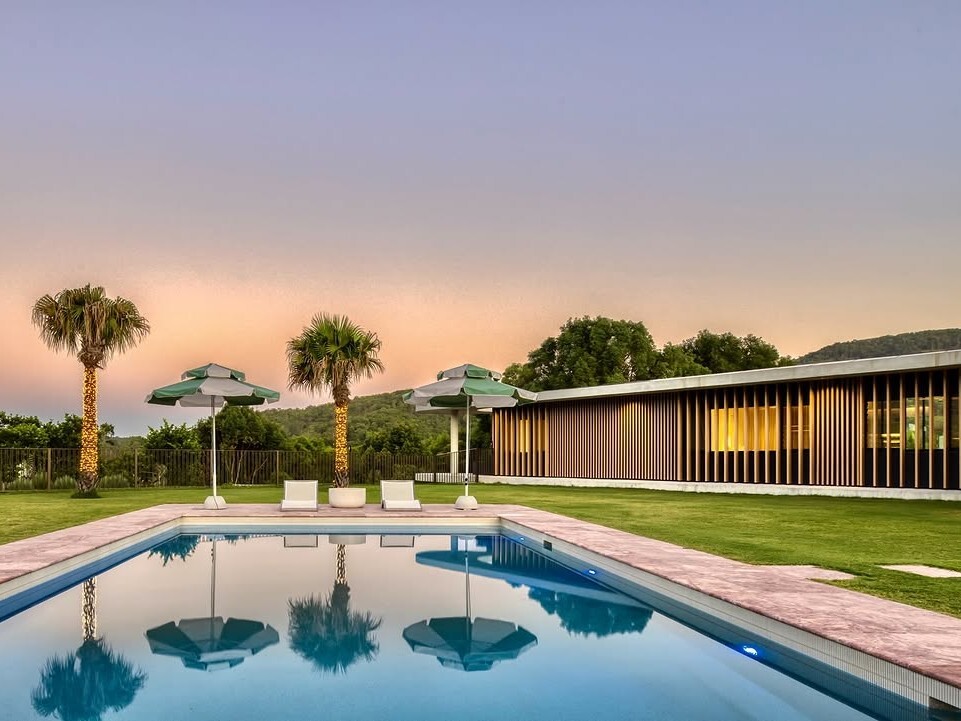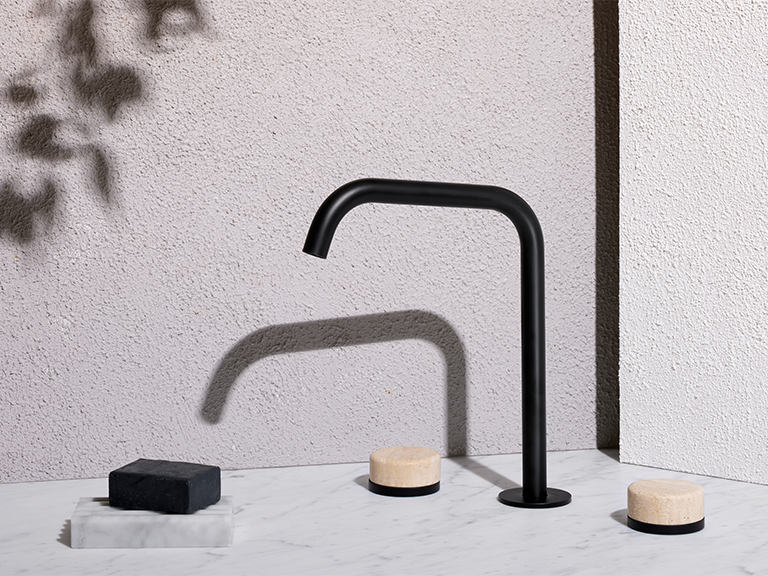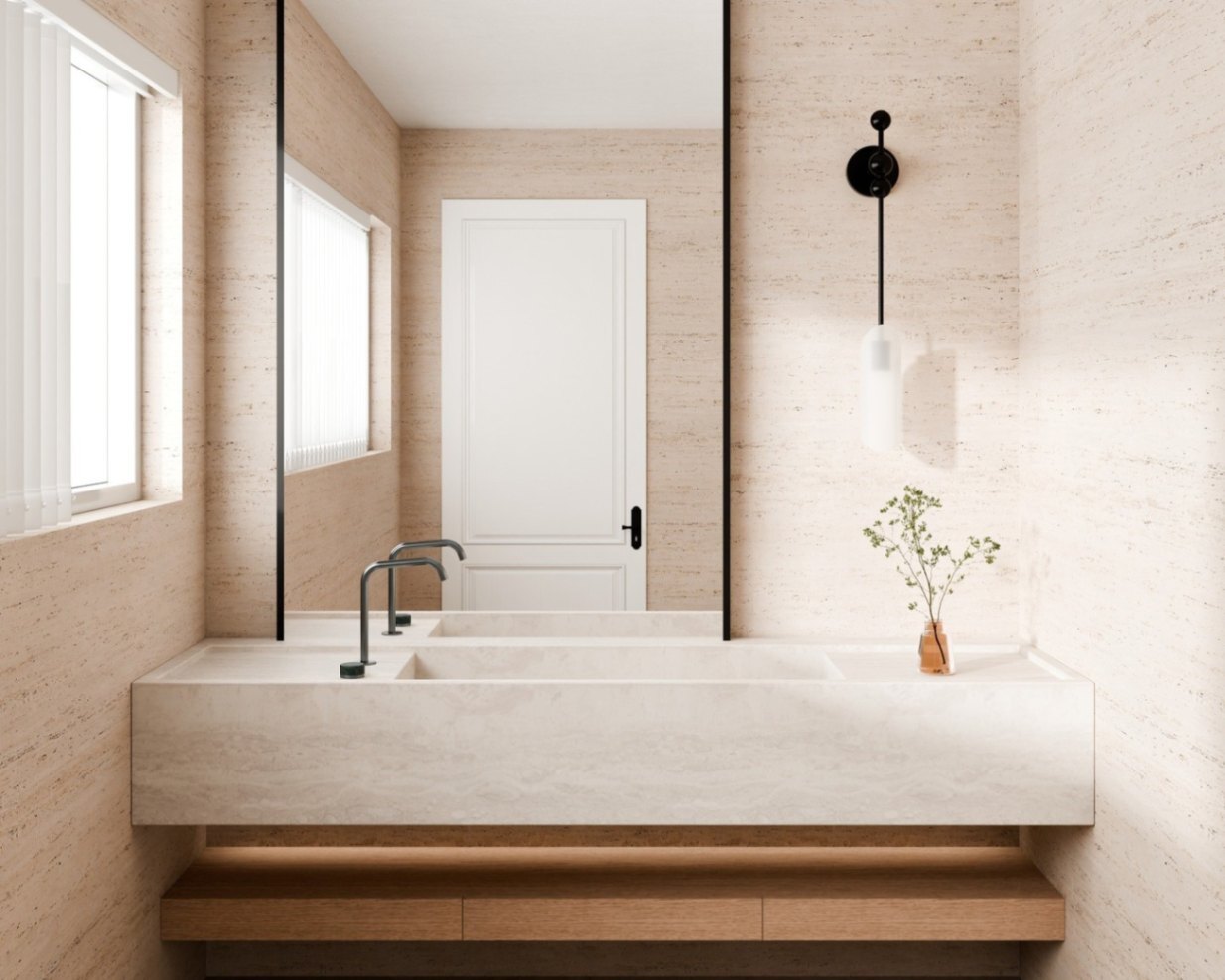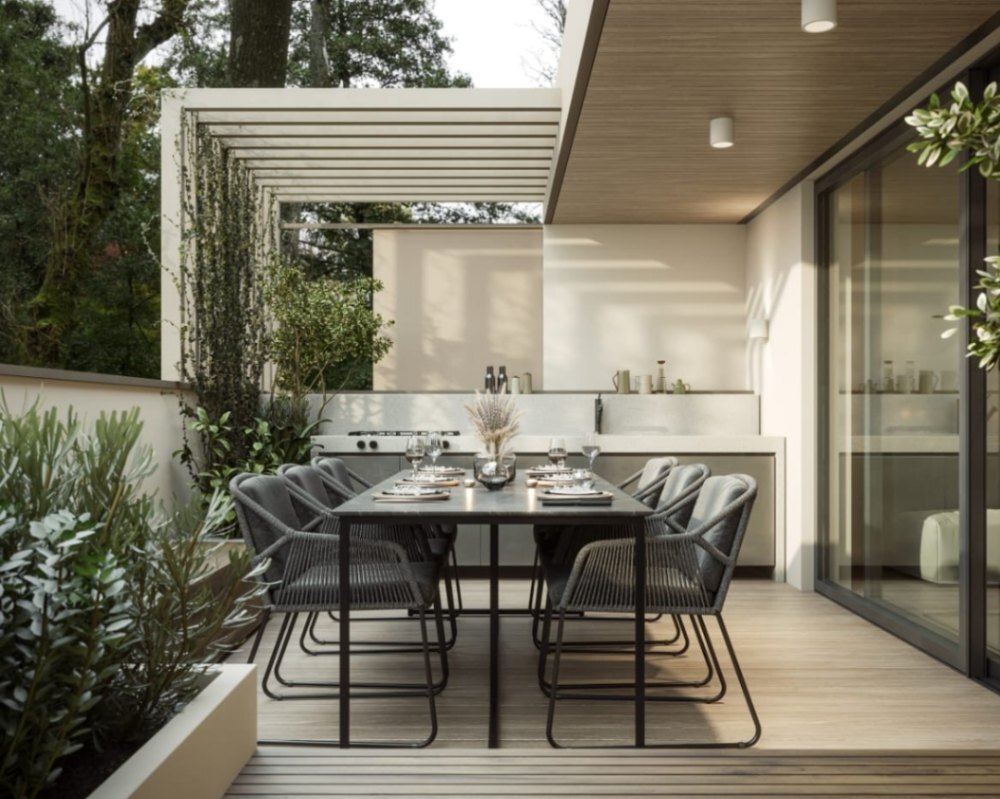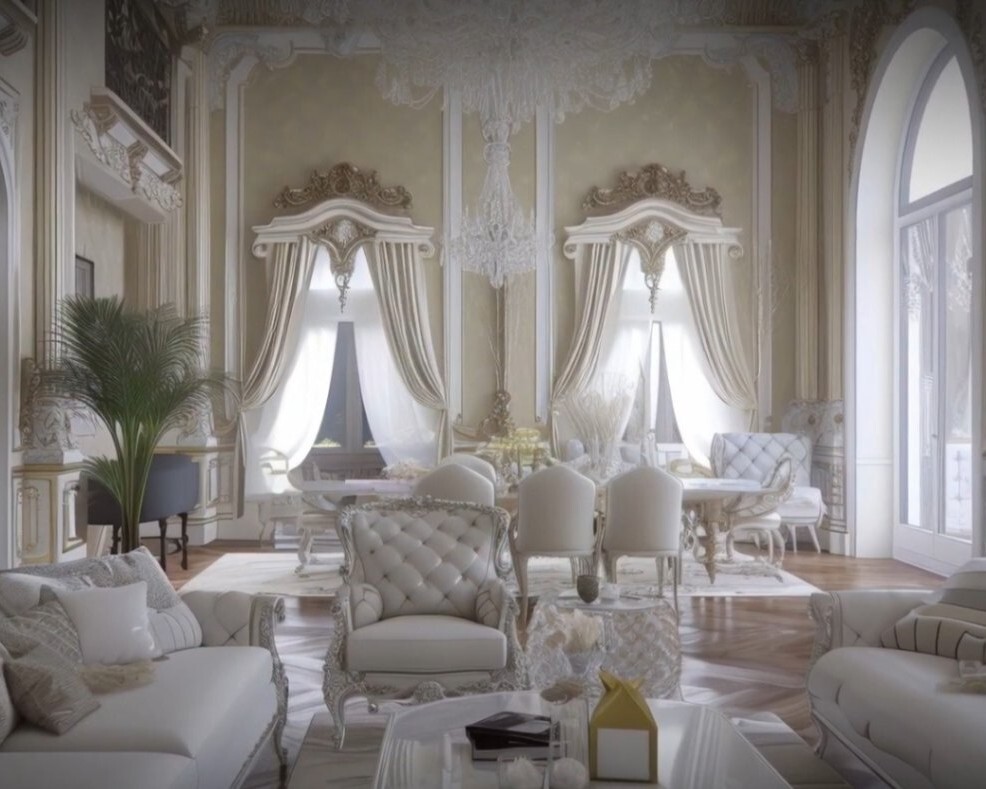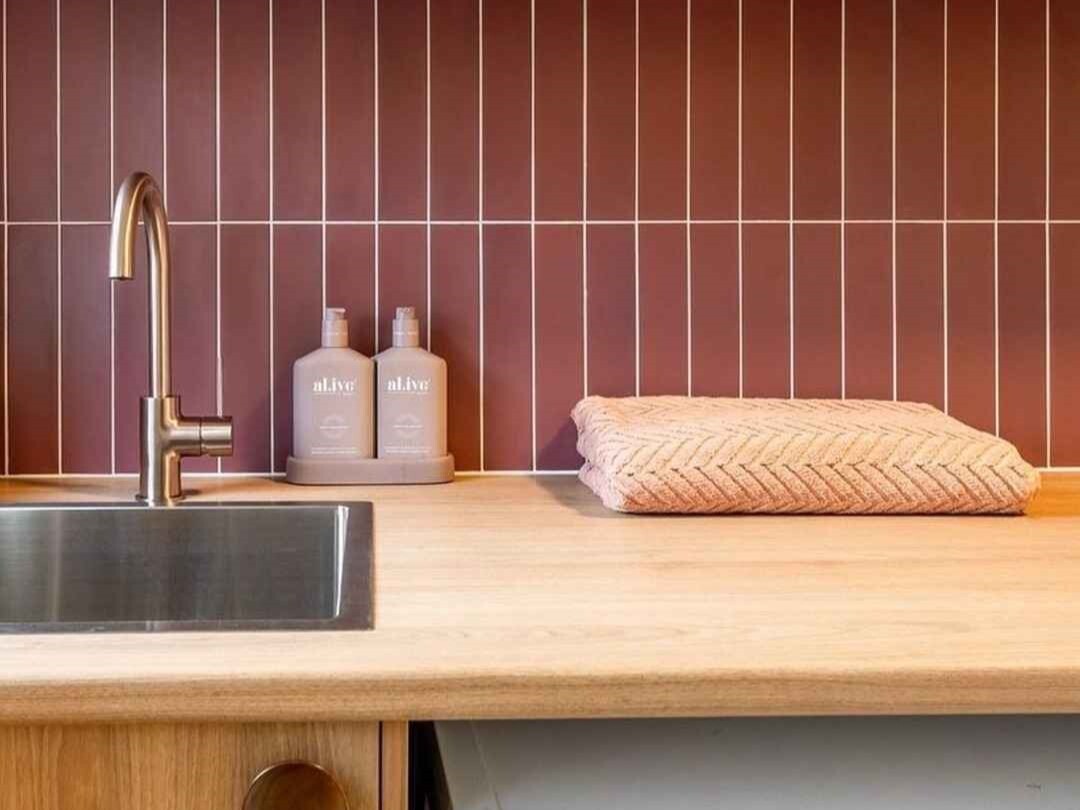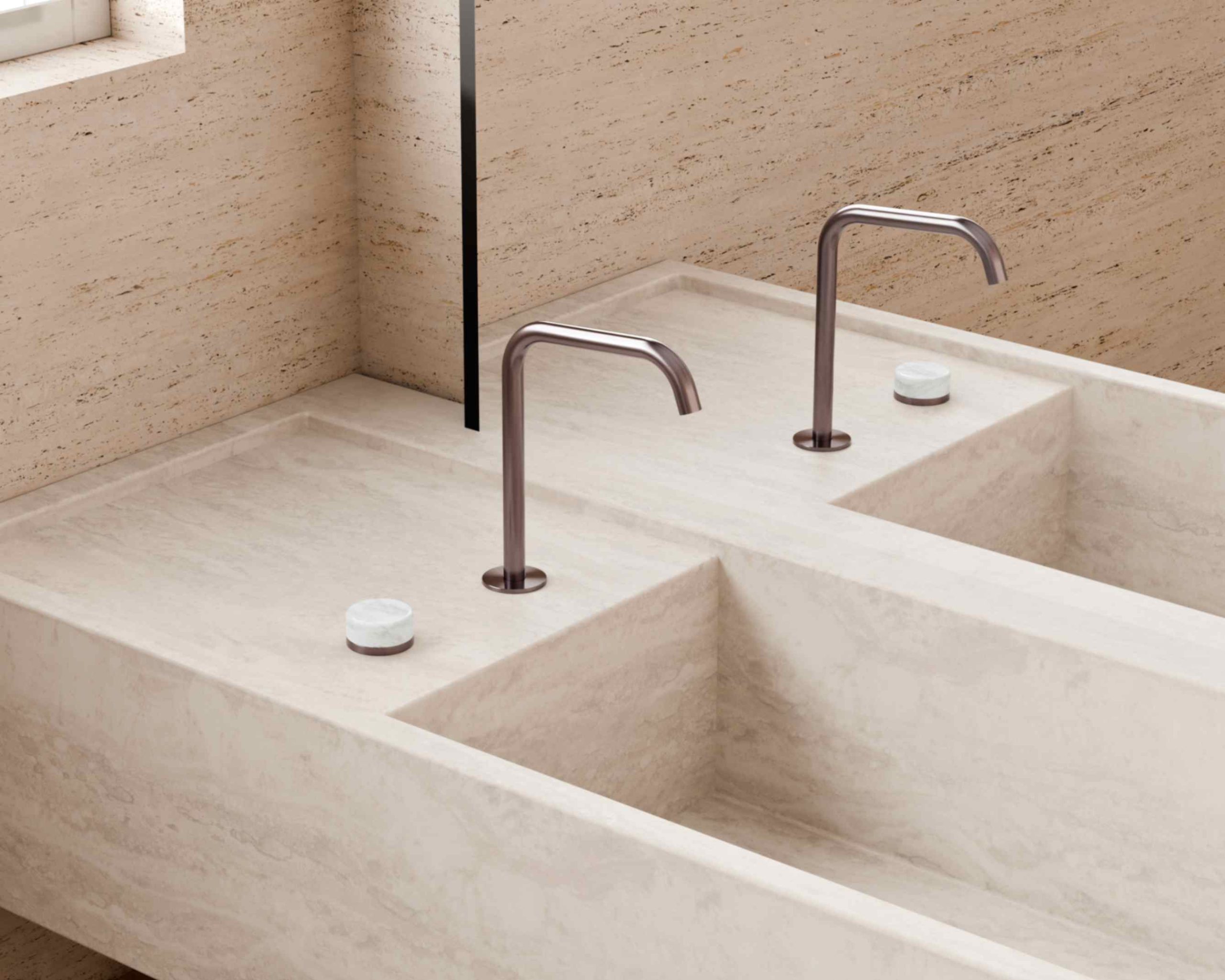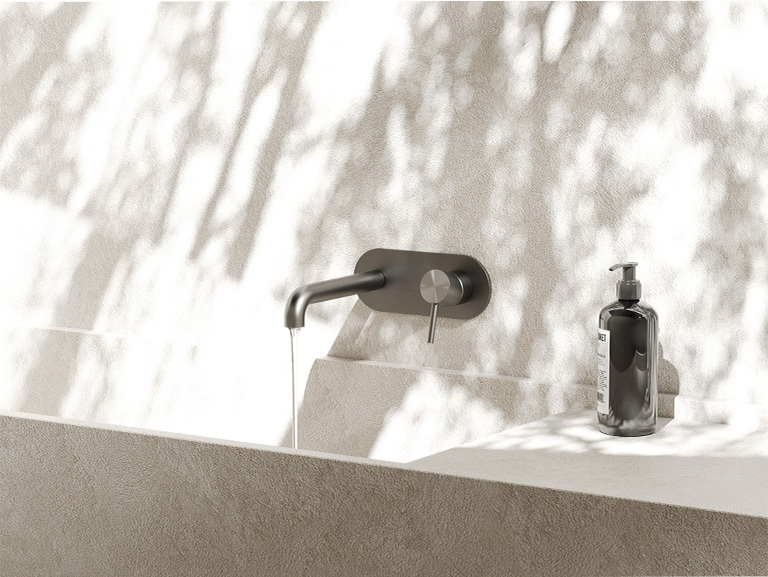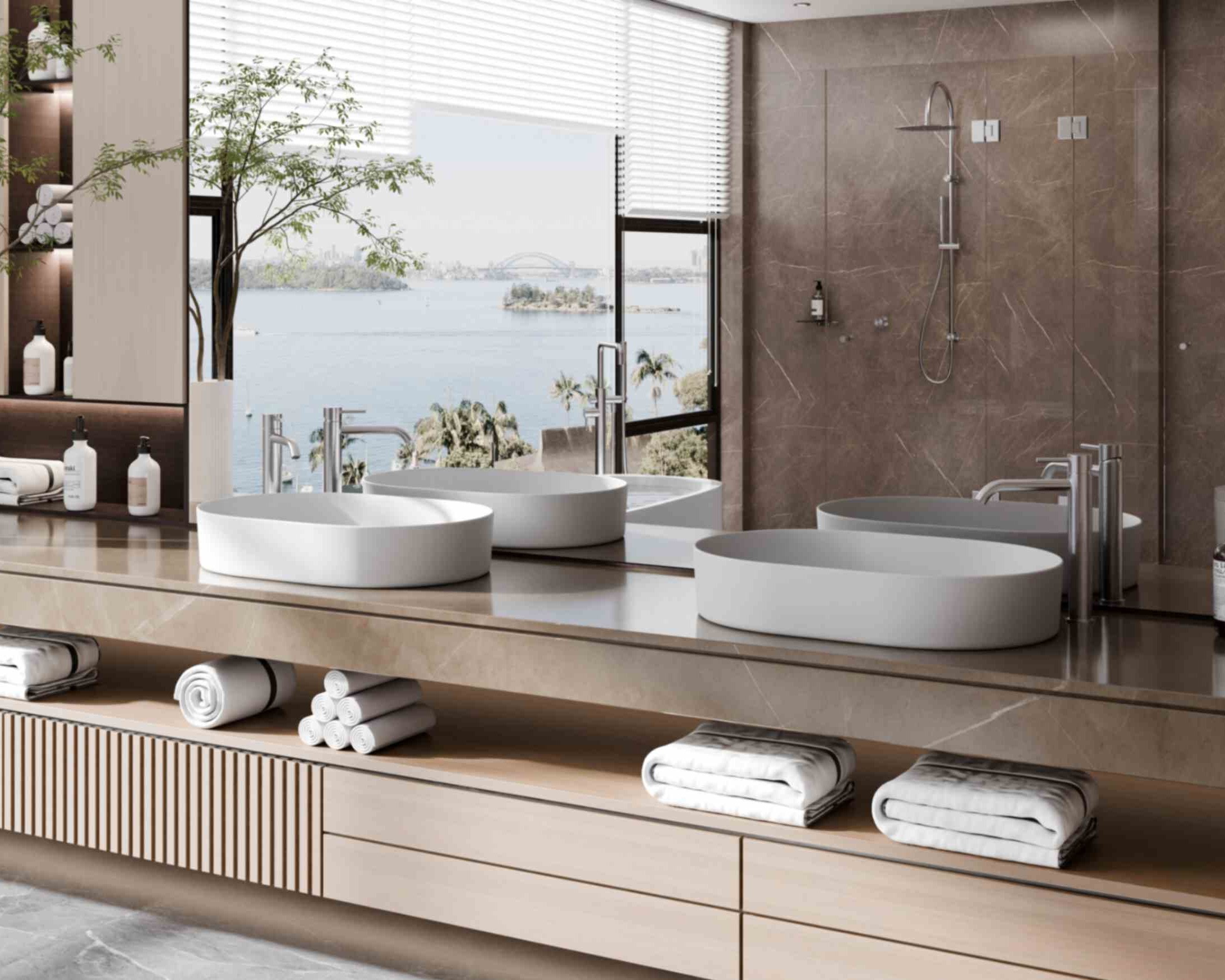
How to Mix Metals in Home Décor: A Guide to Effortless Elegance
Learn how to elegantly mix metals in your home decor in this comprehensive guide. We will give you helpful, practical, and straightforward tips so you can create a sophisticated and visually appealing interior design.

Mixing metals in home décor used to be a big no-no. For years, designers and homeowners stuck to one metal finish per room—gold, silver, bronze, or black. Anything else? It was seen as clashing. But interior design has evolved, and today, blending different metals is not only accepted—it’s encouraged.
Why? Because it adds depth, contrast, and personality to a space. A carefully curated mix of metals can make a room feel more layered, sophisticated, and visually interesting. Instead of looking matchy-matchy, your space feels intentional, modern, and full of character.
But, like anything in design, there’s a right way to do it. Go overboard, and it looks chaotic. Play it too safe, and you miss out on the magic. This guide will walk you through how to mix metals like a pro—whether you’re updating a kitchen, refreshing a bathroom, or fine-tuning your living room.
Understanding Metal Tones and Finishes
Before you start mixing metals, it helps to understand their tones and finishes. Think of metals the way you would think of colors—some are warm, some are cool, and some are neutral. Getting the balance right is what makes a space feel cohesive rather than thrown together.
1. Warm Metals: Inviting and Timeless
Warm metals have golden, reddish, or earthy undertones. They bring warmth and a touch of vintage elegance to a space. Common warm metals include:
- Brass – Classic, timeless, and slightly antique in appearance.
- Gold – Bright, glamorous, and luxurious.
- Copper – Rich, rustic, and known for developing a beautiful patina over time.
- Oil-Rubbed Bronze – Dark, moody, and full of character with brownish undertones.
2. Cool Metals: Sleek and Modern
Cool metals, on the other hand, have blue, gray, or silver undertones. They create a crisp, contemporary feel and reflect light beautifully. Popular cool metals include:
- Chrome – Polished and highly reflective, often seen in modern kitchens and bathrooms.
- Polished Nickel – Similar to chrome but with a softer, warmer hue.
- Brushed Nickel – A more muted version of polished nickel with a subtle texture.
- Stainless Steel – Durable, practical, and commonly used in appliances.
3. Neutral Metals: The Great Equalizers
If you’re unsure how to bridge the gap between warm and cool metals, neutral metals can help. They don’t lean too warm or too cool, so they work well with almost any combination.
- Black Metal – Matte black or iron finishes ground a space, making other metals pop.
- Pewter – A soft, aged metal that sits somewhere between warm and cool.
- White Metals – Often seen in modern light fixtures, white metals offer a clean, minimalist look.
Finishes Matter, Too
Beyond color, the finish of a metal plays a huge role in how it looks alongside others. Mixing different finishes adds variety, so you don’t have a flat, one-note look. Here are the main types:
- Polished – High shine, reflective, and glamorous.
- Brushed – Soft, muted, and more forgiving with fingerprints.
- Matte – Zero shine, understated, and contemporary.
- Aged or Antiqued – Designed to look worn-in and vintage.
- Hammered or Textured – Adds depth and visual interest.
Now that you understand the tones and finishes, let’s move on to Guidelines for Mixing Metals—where the real magic happens.
Also Read:Japandi Bathroom Perfection: The Ultimate Guide to Serene, Stylish Spaces
Guidelines for Mixing Metals

Mixing metals is an art, but it’s also part science. Too much variety, and a space can feel chaotic. Too little, and you miss out on the layered, curated look that makes mixed metals so striking.
Follow these key guidelines to create a balanced, intentional design:
1. Limit the Number of Metals
One of the biggest mistakes people make is throwing in too many different metals. The sweet spot? Two to three per space.
- Small rooms (like a powder room) → Stick to two metals to avoid visual clutter.
- Larger rooms (like an open-concept kitchen/living area) → You can use three metals, but they should be thoughtfully spread out.
For example, in a bathroom, you might choose brushed brass for the mirror, matte black for the hardware, and chrome for the faucets.
2. Choose a Dominant Metal
Think of your dominant metal as the anchor of the room. This should be the metal that appears most frequently—on large fixtures like faucets, light fixtures, or cabinet hardware.
Then, use a secondary metal as an accent to create contrast. If you’re adding a third metal, it should be a subtle supporting player, used in small doses.
For example:
- Dominant: Brushed nickel faucets
- Secondary: Aged brass cabinet pulls
- Accent: Matte black light fixtures
3. Balance Warm and Cool Tones
A room feels more dynamic when warm and cool metals are paired together. The contrast makes each finish stand out.
- Best combinations:
- Brass (warm) + Chrome (cool) → Classic and timeless
- Gold (warm) + Black (neutral) → Bold and sophisticated
- Oil-rubbed bronze (warm) + Stainless steel (cool) → Cozy yet industrial
The key is intentional contrast—too many warm tones together can feel overly vintage, while too many cool tones can feel cold and sterile. A mix adds balance.
4. Mix Finishes for Depth
Even if you stick to just two metals, you can create variety by mixing finishes. A brushed or matte finish can soften a highly reflective polished metal.
Example combinations:
- Polished nickel faucets + Brushed brass light fixtures
- Matte black cabinet pulls + Satin gold sconces
- Aged bronze mirror frame + Chrome towel bars
This helps prevent the space from feeling too uniform or overly coordinated.
5. Keep Functional Elements Consistent
While it’s great to mix metals in a space, some elements should stay consistent.
For example, in a bathroom:
- Keep all the plumbing fixtures (faucets, showerheads, towel bars) the same metal for a seamless look.
- Change up the hardware, mirror frame, or lighting for contrast.
In a kitchen:
- Keep all appliances the same (if they’re stainless steel, don’t mix in black or white appliances).
- Switch up cabinet hardware, light fixtures, and seating accents to mix metals in a natural way.
6. Distribute Metals Evenly
Don’t cluster all of one metal in one area—it should be spread throughout the space.
Think of it like styling a bookshelf. If all the books are on one side and all the décor is on the other, it looks unbalanced. The same goes for metals—scatter them throughout the room.
For example:
- If you have gold cabinet pulls, try adding black light fixtures and a chrome faucet to create a well-balanced mix.
- In a living room, if you have brass table legs, echo that tone in small ways—like a brass picture frame or gold-trimmed mirror.
By following these guidelines, you’ll create a space that feels intentional, layered, and effortlessly stylish.
Also Read:Rococo Revival: How to Bring 18th-Century Elegance into Modern Homes
Practical Applications in Different Rooms
Now that you know the rules of mixing metals, let’s talk about how to apply them in real spaces. Every room has its own design challenges, and mixing metals should feel natural, not forced.
Here’s how to get it right in different areas of your home:
1. Kitchen: Where Function Meets Style

The kitchen is one of the easiest places to mix metals because there are so many opportunities—faucets, hardware, appliances, lighting, and even barstools. But that also makes it one of the easiest places to go overboard.
Best Metal Combinations for Kitchens:
- Warm Brass + Cool Stainless Steel + Black → Balanced, modern, and inviting
- Brushed Nickel + Matte Black → Sleek and contemporary
- Polished Chrome + Aged Brass → Timeless and sophisticated
How to Mix Metals in the Kitchen:
- Faucets & Sinks → Start here. Stainless steel sinks and chrome or brushed nickel faucets are classic choices, but a brass or matte black faucet can make a bold statement.
- Cabinet Hardware → If your faucet is a cool-toned metal, contrast it with warm brass or matte black cabinet pulls.
- Light Fixtures → Pendant lights are a great place to introduce a different metal, like black iron or aged brass.
- Appliances → If you have stainless steel appliances, balance them with warm-toned accents like brass or bronze to avoid an overly cold look.
2. Bathroom: A Small Space That Can Handle Big Contrast

Because bathrooms are smaller, every detail stands out. The trick to mixing metals in the bathroom is to keep all plumbing fixtures the same (faucets, showerheads, towel bars) but mix metals in mirrors, lighting, and cabinet hardware.
Best Metal Combinations for Bathrooms:
- Brushed Nickel + Black → Understated and modern
- Chrome + Aged Brass → Classic and elegant
- Matte Black + Gold → Bold and luxurious
How to Mix Metals in the Bathroom:
- Plumbing Fixtures → Keep them consistent—if your faucet is chrome, keep the showerhead and towel bars chrome too.
- Mirror Frames → A brass or black metal mirror can add contrast against cooler fixtures.
- Lighting → If your plumbing fixtures are cool-toned, go warmer with sconces (brass or gold) for balance.
- Cabinet Hardware → A subtle place to introduce a different metal, like black knobs on a white vanity with nickel faucets.
If you want a wide selection of bathroom and kitchen tapware finishes you can choose from, Nero Tapware has got your back! From brushed gold, chrome, and brushed nickel to aged brass, matte black, and gunmetal, we have everything you need! Feel free to browse through our products or contact us so we can help you!
3. Living Room: A Chance to Be More Playful

Since the living room doesn’t have plumbing fixtures, you have more freedom to mix metals in furniture, lighting, shelving, and décor. The key is to spread them evenly so one area doesn’t feel too heavy with a single tone.
Best Metal Combinations for Living Rooms:
- Gold + Black → Modern and sophisticated
- Brass + Chrome + Black → A well-balanced mix of warm, cool, and neutral tones
- Antique Bronze + Brushed Nickel → A rustic yet refined pairing
How to Mix Metals in the Living Room:
- Light Fixtures → A statement chandelier in black or gold can anchor the room.
- Furniture Legs & Frames → Mix a brass coffee table with a black metal side table.
- Décor Accents → Picture frames, vases, and mirrors are easy ways to introduce an accent metal.
- Fireplace Surrounds → If your fireplace has a metal frame, make sure it complements other metal finishes in the space.
4. Bedroom: Subtle but Impactful

Your bedroom should feel calm and cohesive, so metal mixing should be a little more subtle. The easiest places to incorporate mixed metals are in bed frames, nightstands, lighting, and hardware.
Best Metal Combinations for Bedrooms:
- Gold + Matte Black → Chic and modern
- Brass + Pewter → Soft and elegant
- Chrome + Oil-Rubbed Bronze → A mix of classic and industrial
How to Mix Metals in the Bedroom:
- Bed Frame & Nightstands → If your bed frame is black metal, try brass drawer pulls on nightstands for contrast.
- Lighting → A black iron lamp with a brushed nickel base creates visual interest.
- Wall Art & Mirrors → A mix of silver and gold frames gives a gallery wall a layered look.
- Hardware → Drawer knobs and door handles are small but can make an impact when mixed thoughtfully.
Also Read:From Bauhaus to Brutalism: Tapware Styles That Complement Iconic Design Eras
Other Common Mistakes to Avoid When Mixing Metals
Even with the best intentions, mixing metals can go wrong if the balance is off. Here are the most common mistakes people make—and how to fix them:
1. Ignoring Metal Finishes
The Mistake: Mixing polished and brushed finishes in a way that feels unintentional, or using too many shiny finishes, which can make the space feel overwhelming.
How to Fix It:
- Stick to one or two finishes per space (e.g., polished chrome + brushed brass).
- Use matte or brushed finishes to tone down excessive shine.
- Example: A brushed brass faucet looks more cohesive with brushed nickel cabinet pulls rather than polished chrome.
2. Forgetting About the Room’s Style
The Mistake: Mixing metals in a way that doesn’t match the overall design aesthetic.
How to Fix It:
- Modern spaces → Matte black, chrome, and brushed nickel work well.
- Traditional spaces → Aged brass, oil-rubbed bronze, and polished nickel create warmth.
- Industrial spaces → Black iron, steel, and antique brass add character.
- Example: In a farmhouse-style kitchen, a mix of aged brass and matte black looks intentional, while polished chrome might feel out of place.
3. Not Considering the Existing Metals in the Room
The Mistake: Introducing a metal that clashes with permanent fixtures (like door handles, window frames, or fireplace finishes).
How to Fix It:
- Work with the existing metals in your home instead of against them.
- Example: If your home already has black metal window frames, it’s easier to incorporate black or brass accents rather than introducing an unrelated metal.
4. Changing Metals Without Purpose
The Mistake: Switching metals just for the sake of variety, rather than having a clear design plan.
How to Fix It:
- Every metal choice should serve a purpose—whether it’s adding contrast, warmth, or visual depth.
- Example: If your light fixtures are black, your cabinet pulls should contrast with them in a way that makes sense (e.g., brass or brushed nickel).
Also Read:
- How to Design a Nancy Meyers Kitchen That Feels Like a Movie Set
- Minimalism vs. Maximalism: The Ultimate Design Showdown (And How to Get It Right!)
Final Takeaway
Mixing metals in home décor is all about intentional contrast, thoughtful placement, and a cohesive finish. By following these guidelines, you’ll create spaces that feel layered, stylish, and inviting—without looking overdone.
So, go ahead. Experiment. Play with contrasts. Trust your instincts. Your home should be a reflection of you, and with the right balance, mixed metals can make it truly shine.
